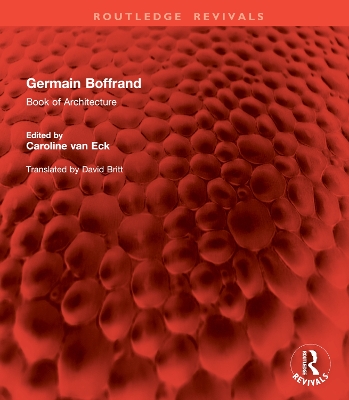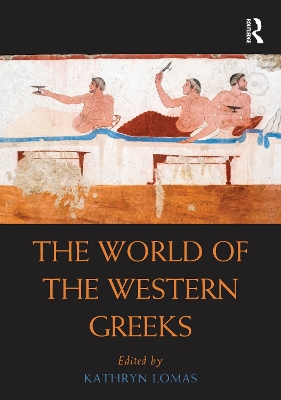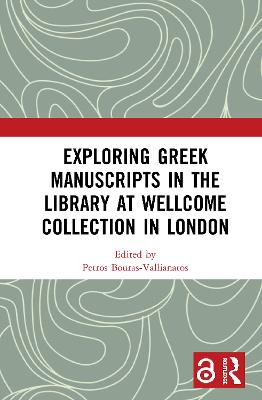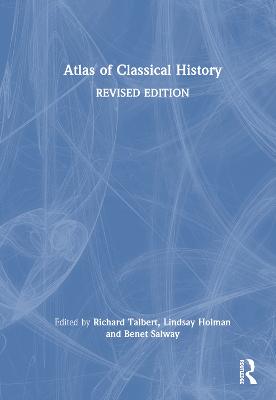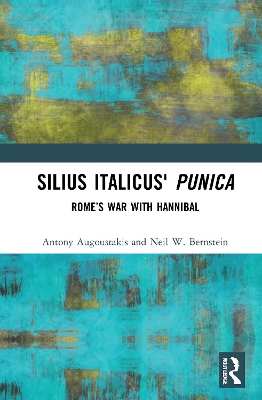Bodily Fluids in Antiquity
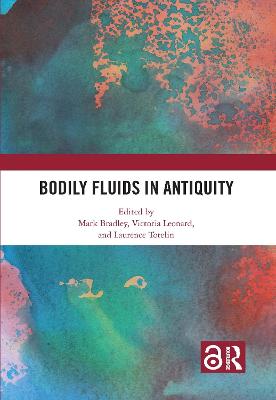 -10%
portes grátis
-10%
portes grátis
Bodily Fluids in Antiquity
Totelin, Laurence; Bradley, Mark; Leonard, Victoria
Taylor & Francis Ltd
04/2021
432
Dura
Inglês
9781138343726
15 a 20 dias
1000
Descrição não disponível.
List of figures; List of tables; Acknowledgments; Contributors; Introduction, Mark Bradley, Victoria Leonard, and Laurence Totelin; Part I The language of fluidity; 1. Fluid vocabulary: flux in the lexicon of bodily emissions, Amy Coker; Part II A woman in flux; 2. A valid excuse for a day off work: menstruation in an ancient Egyptian village, Rosalind Janssen; 3. Uterine bleeding, knowledge, and emotion in ancient Greek medical and magical representations, Irene Salvo; 4. Puellae gently glow: scent, sweat, and the real in Latin love elegy and Ovid's didactic works, Jane Burkowski; 5. Overflowing bodies and a Pandora of Ivory: the pure humours of an erotic surrogate, Catalina Popescu; Part III Erotic and generative fluids; 6. The eyes have it: from generative fluids to vision rays, Julie Laskaris; 7. 'Infertile' and 'sub-fertile' semen in the Hippocratic Corpus and the biological works of Aristotle, Rebecca Fallas; 8. Say it with fluids: what the body exudes and retains when Juvenal's couple relationships go awry, Claude-Emmanuelle Centlivres Challet; 9. Flabby flesh and foetal formation: body fluidity and foetal sex differentiation in Ancient Greek medicine, Tara Mulder; 10. One-seed, two-seed, three-seed? Reassessing ancient theories of generation, Rebecca Flemming; 11. Phalli fighting with fluids: approaching images of ejaculating phalli in the Roman world, Adam Parker; Part IV Nutritive and healthy fluids; 12. A natural symbol? The (un)importance of blood in early Greek literary and religious contexts, Emily Kearns; 13. Taste and the senses: Galen's humours clarified, John Wilkins; 14. Breastmilk, breastfeeding, and the female body in early Imperial Rome, Thea Lawrence; 15. Breastmilk in the cave and on the arena: early Christian stories of lactation in context, Laurence Totelin; Part V Dissolving and liquefying bodies; 16. Tears and the leaky vessel: permeable and fluid bodies in Ovid and Lucretius, Peter Kelly; 17. Seneca's corpus: a sympathy of fluids and fluctuations, Michael Goyette; 18. Bodily fluids, grotesque imagery, and poetics in Persius' Satires, Andreas Gavrielatos; Part VI Wounded and putrefying bodies; 19. 'Efflux is my manifestation': positive conceptions of putrefactive fluids in the ancient Egyptian coffin texts, Tasha Dobbin-Bennett; 20. The physiology of matricide: revenge and metabolism imagery in Aeschylus' Oresteia, Goran Vidovic; 21. Open wounds, liquid bodies, and melting selves in Early Imperial Latin literature, Assaf Krebs; Part VII Ancient fluids: afterlife and reception; 22. The reception of Classical constructions of blood in Medieval and Early Modern martyrologies, Anastasia Stylianou; 23. 'Expelling the purple tyrant from the citadel': the menstruation debate in book 2 of Abraham Cowley's Plantarum libri sex (1662), Caroline Spearing; 24. Opening the body of fluids: taking in and pouring out in Renaissance readings of Classical women, Helen King; Envoi, Mark Bradley and Victoria Leonard; Index
Este título pertence ao(s) assunto(s) indicados(s). Para ver outros títulos clique no assunto desejado.
Young Men;Medicine;Animal Kingdom;The body;Vice Versa;Identity;Stronger Semen;Gender;Uterine Bleeding;Sexuality;Spinal Cord;Ancient Egypt;Ancient Bodies;Greece;Deir El Medina;Rome;Menstrual Fluid;Byzantium;Menstrual Blood;Persia;Early Modern Medicine;Reception;Libation Bearers;Sensory turn;Natural Fertility Populations;Emotions;Hippocratic Corpus;Classical literature;Female Seed;Ancient religion;Hippocratic Texts;Evil Eye;Wider Issues;Contemporary Society;Impotence Poem;Menstrual Synchrony;Coffin Texts;Senecan Prose;Ejaculating Phalli;Foetal Sex
List of figures; List of tables; Acknowledgments; Contributors; Introduction, Mark Bradley, Victoria Leonard, and Laurence Totelin; Part I The language of fluidity; 1. Fluid vocabulary: flux in the lexicon of bodily emissions, Amy Coker; Part II A woman in flux; 2. A valid excuse for a day off work: menstruation in an ancient Egyptian village, Rosalind Janssen; 3. Uterine bleeding, knowledge, and emotion in ancient Greek medical and magical representations, Irene Salvo; 4. Puellae gently glow: scent, sweat, and the real in Latin love elegy and Ovid's didactic works, Jane Burkowski; 5. Overflowing bodies and a Pandora of Ivory: the pure humours of an erotic surrogate, Catalina Popescu; Part III Erotic and generative fluids; 6. The eyes have it: from generative fluids to vision rays, Julie Laskaris; 7. 'Infertile' and 'sub-fertile' semen in the Hippocratic Corpus and the biological works of Aristotle, Rebecca Fallas; 8. Say it with fluids: what the body exudes and retains when Juvenal's couple relationships go awry, Claude-Emmanuelle Centlivres Challet; 9. Flabby flesh and foetal formation: body fluidity and foetal sex differentiation in Ancient Greek medicine, Tara Mulder; 10. One-seed, two-seed, three-seed? Reassessing ancient theories of generation, Rebecca Flemming; 11. Phalli fighting with fluids: approaching images of ejaculating phalli in the Roman world, Adam Parker; Part IV Nutritive and healthy fluids; 12. A natural symbol? The (un)importance of blood in early Greek literary and religious contexts, Emily Kearns; 13. Taste and the senses: Galen's humours clarified, John Wilkins; 14. Breastmilk, breastfeeding, and the female body in early Imperial Rome, Thea Lawrence; 15. Breastmilk in the cave and on the arena: early Christian stories of lactation in context, Laurence Totelin; Part V Dissolving and liquefying bodies; 16. Tears and the leaky vessel: permeable and fluid bodies in Ovid and Lucretius, Peter Kelly; 17. Seneca's corpus: a sympathy of fluids and fluctuations, Michael Goyette; 18. Bodily fluids, grotesque imagery, and poetics in Persius' Satires, Andreas Gavrielatos; Part VI Wounded and putrefying bodies; 19. 'Efflux is my manifestation': positive conceptions of putrefactive fluids in the ancient Egyptian coffin texts, Tasha Dobbin-Bennett; 20. The physiology of matricide: revenge and metabolism imagery in Aeschylus' Oresteia, Goran Vidovic; 21. Open wounds, liquid bodies, and melting selves in Early Imperial Latin literature, Assaf Krebs; Part VII Ancient fluids: afterlife and reception; 22. The reception of Classical constructions of blood in Medieval and Early Modern martyrologies, Anastasia Stylianou; 23. 'Expelling the purple tyrant from the citadel': the menstruation debate in book 2 of Abraham Cowley's Plantarum libri sex (1662), Caroline Spearing; 24. Opening the body of fluids: taking in and pouring out in Renaissance readings of Classical women, Helen King; Envoi, Mark Bradley and Victoria Leonard; Index
Este título pertence ao(s) assunto(s) indicados(s). Para ver outros títulos clique no assunto desejado.
Young Men;Medicine;Animal Kingdom;The body;Vice Versa;Identity;Stronger Semen;Gender;Uterine Bleeding;Sexuality;Spinal Cord;Ancient Egypt;Ancient Bodies;Greece;Deir El Medina;Rome;Menstrual Fluid;Byzantium;Menstrual Blood;Persia;Early Modern Medicine;Reception;Libation Bearers;Sensory turn;Natural Fertility Populations;Emotions;Hippocratic Corpus;Classical literature;Female Seed;Ancient religion;Hippocratic Texts;Evil Eye;Wider Issues;Contemporary Society;Impotence Poem;Menstrual Synchrony;Coffin Texts;Senecan Prose;Ejaculating Phalli;Foetal Sex

